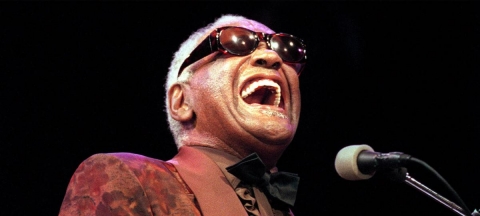Ray Charles Blindness Cause: Unveiling The Mystery Behind His Vision Loss
Introduction
Ray Charles, the legendary musician and composer, is celebrated worldwide for his unparalleled contributions to music. Despite losing his vision at a young age, Charles became an icon in the music industry, leaving a lasting legacy. But what exactly caused his blindness? Over the years, various theories and explanations have emerged. In this article, we will delve into the possible causes of Ray Charles' blindness, exploring medical possibilities and historical accounts to uncover the truth behind his vision loss.
Early Life and Vision Loss
When Did Ray Charles Lose His Sight?
Ray Charles was not born blind. According to multiple sources, his vision began to deteriorate at the age of four or five. By the time he was seven, he had completely lost his sight. The exact year was 1937, when his right eye was removed due to intense pain, marking the end of his visual journey. This gradual loss of vision was a significant turning point in his life, but it did not hinder his musical ambitions.
What Medical Experts Say
Most medical experts agree that glaucoma was the likely culprit behind Ray Charles' blindness. Glaucoma is a condition that damages the optic nerve, often due to abnormally high pressure in the eye. Although definitive evidence is lacking, the progression of his vision loss aligns with the symptoms of glaucoma.
- Glaucoma is a common cause of blindness, especially in children if left untreated.
- Charles' eyes reportedly began leaking, prompting his mother to take him to local doctors. Unfortunately, they could not provide a clear explanation for his condition.
- Years later, doctors suggested that juvenile glaucoma may have been responsible for his blindness.
Possible Alternative Causes
Retinitis Pigmentosa (RP)
Some accounts suggest that Ray Charles suffered from a rare degenerative eye disease called retinitis pigmentosa (RP). This condition causes the progressive deterioration of the retina, leading to gradual vision loss. While this theory is less widely accepted, it remains a plausible explanation for his blindness.
Nutritional Optic Neuropathy
Another theory points to a rare genetic disorder known as nutritional optic neuropathy. This condition affects the optic nerve and can lead to vision loss. However, this explanation is less commonly cited in discussions about Ray Charles' blindness.
Infection Triggered by Skin Disease
A few sources suggest that an infection triggered by a skin disease could have caused Ray Charles' blindness. This infection reportedly led to surgery and, subsequently, herpes infections in both eyes. While intriguing, this theory lacks substantial evidence and remains speculative.
Impact of Poverty on Diagnosis
It is important to consider the socio-economic context of Ray Charles' upbringing. Growing up in a poor family, access to advanced medical care was limited. This may have contributed to the lack of a definitive diagnosis for his condition. The Robinson family, like many others in their community, faced challenges in obtaining proper medical attention for their child's health issues.
Charles' Resilience and Legacy
Despite his blindness, Ray Charles did not let his condition define him. He channeled his energy into music, creating timeless compositions that continue to inspire generations. His blindness, caused by a childhood illness, did not hinder his musical abilities but instead fueled his determination to overcome obstacles.
How His Blindness Influenced His Music
Rather than distance himself from the tradition of blind African American musicians, Charles embraced his identity. He used his experiences to connect with audiences on a deeper level, infusing his music with emotion and authenticity. His ability to overcome adversity became a central theme in his work, earning him respect and admiration worldwide.
Conclusion
In summary, Ray Charles' blindness remains a topic of interest for many. While glaucoma is the most widely accepted cause, other theories, such as retinitis pigmentosa and nutritional optic neuropathy, have also been proposed. Regardless of the exact cause, Charles' resilience and dedication to his craft are undeniable. His life serves as a testament to the power of perseverance and creativity in the face of adversity.
To recap:
- Ray Charles began losing his vision at the age of four or five and became completely blind by the age of seven.
- Glaucoma is considered the most likely cause of his blindness, though other possibilities exist.
- Poverty and limited access to medical care during his childhood may have contributed to the lack of a definitive diagnosis.
- Despite his blindness, Charles became a musical icon, inspiring countless individuals with his talent and determination.
Ray Charles' story is a powerful reminder that challenges can be transformed into opportunities for greatness. His legacy continues to resonate with people around the globe, proving that vision is not always necessary to see the beauty in life and music.
:max_bytes(150000):strip_icc()/GettyImages-569352057-5ae78ed4a9d4f90037898b2a.jpg)
How Did Singer-Musician Ray Charles Become Blind?

Ray Charles Without Sunglasses: Unveiling the Man Behind the Shades

Ray Charles and Disability | Smithsonian Music